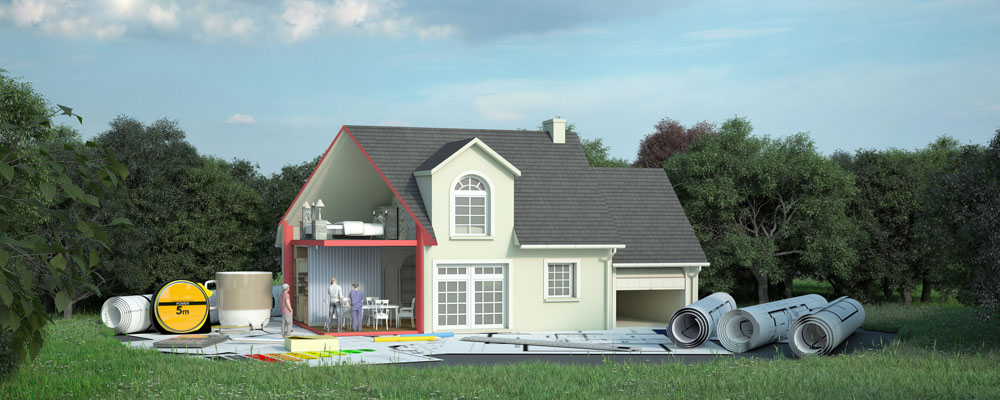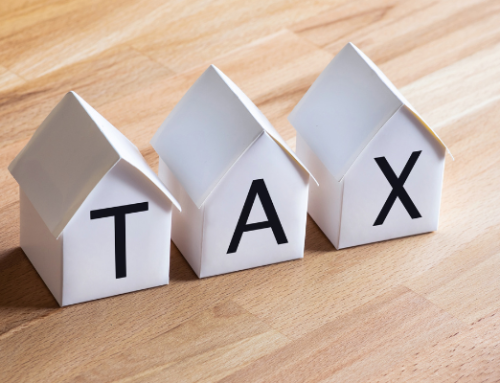Amid rising costs and thinner margins, home builders and real estate developers are looking to tax incentives to help defray construction expenses. Since 2006, the 45L tax credit has been a useful tool to incentivize more energy-efficient residential buildings. It expired and was retroactively extended multiple times, making it hard for builders to plan on it for long-term projects. Up until recently, 45L expired at the end of 2021.
The Inflation Reduction Act, which was passed in August 2022, retroactively reinstated 45L for 2022 and extended the credit through 2032. For the 2022 tax year, projects follow the same eligibility rules. Beginning in January 2023, more stringent energy efficiency requirements will be in place.
How the 45L Tax Credit Works
Through December 31, 2022, existing rules for 45L are still in place; however, the building must be sold, placed in service, or leased by the end of the year.
Historically, certain residential buildings that met at least a 30 percent energy savings were eligible for a per-unit tax credit. The following property types qualified:
- Single- and multi-family homes
- Student housing
- Senior living facilities
- Condominiums
- Townhomes
Both rental properties and primary residences qualified. The building could not exceed three stories tall, excluding any below-ground parking garage.
If the building achieved certain energy efficiency ratings compared to the 2006 International Energy Conservation Code (IECC), each unit was eligible for a tax credit of either $1,000 or $2,000, depending on whether the energy savings were 30 percent or 50 percent, respectively. Manufactured homes have been eligible for a $1,000 credit for meeting ENERGY Star requirements.
Part of the energy savings must have been in the building envelope, which the IRS defines as the “basement walls, exterior walls, floor, roof, and any other building element that encloses conditioned space, including any boundary between conditioned space and unconditioned space.”
The taxpayer claiming the credit must have owned a basis in the property while it was built. Although eligible taxpayers include individuals, partnerships, associations, corporations, or trusts and estates, typically only homebuilders and developers claim the credit. If a homeowner engages in a major renovation project and hires a third-party contractor to complete the work, the homeowner in that situation would qualify for 45L.
Moving forward, taxpayer eligibility rules aren’t changing, but many other aspects of the 45L tax credit will be revised.
45L in 2023 and Beyond
Projects placed in service on January 1, 2023 will be subject to different requirements for 45L tax credits. Stricter energy efficiency rules and prevailing wage guidelines must be in place for taxpayers to claim the highest available tax credits.
Property eligibility is also expanded to include buildings that are more than three stories tall.
For single-family and manufactured homes, 45L is increased to $2,500 and $5,000. To meet the $2,500 tax credit threshold, the building must meet ENERGY STAR® guidelines. To meet the $5,000 threshold, it must achieve Zero Energy Ready Home requirements. Single-family homes built in 2023 or 2024 must adhere to Version 3.1 of the Zero Energy Ready Home program; buildings constructed in 2025 and after would follow the guidelines in Version 3.2. For manufactured homes, achieving the $5,000 tax credit is based on meeting the Manufactured Home National Program requirements in effect two years before the home is built or acquired, whichever is later.
Multi-family homes have several tax credit options depending on the level of energy efficiency and whether prevailing wage and apprenticeship rules are in place.
A single multi-family dwelling can qualify for a $500 tax credit if it meets ENERGY STAR® Multifamily certification standards. This is lower than the previous credit, but there are opportunities to net a higher amount, as noted below.
- $1,000 for each multi-family dwelling that meets Zero Energy Ready Home requirements.
- $2,500 for each unit that meets ENERGY STAR® requirements and utilizes prevailing wage rules.
- $5,000 for each unit that meets Zero Energy Ready Home requirements and prevailing wage rules.
- Note that prevailing wage only applies to multi-family dwellings placed in service in 2023 and after.
Prevailing wage requirements will vary based on where construction occurs and the type of worker classification. Project owners are responsible for determining the appropriate wage rates with the Department of Labor. Apprenticeship requirements may be harder to achieve depending on location. Project owners may still qualify for the higher tax credit without apprenticeship hours, but they must make documented good faith efforts to fulfill the requirements first.
For projects placed in service in 2023 and after, the minimum apprenticeship hours vary based on which year construction began.
- 2022: 10 percent
- 2023: 12.5 percent
- 2024-2032: 15 percent
Moving Forward
Though energy-efficient homes are slightly more expensive to build, the savings in both energy costs and tax incentives help to offset any upfront extra expenses. 45L is a key part of cost planning for these projects, especially since it’s been extended for ten years.
Builders can claim 45L for the year the project is placed in service, even if the credit can’t be used immediately. It can be carried forward up to 20 years. 45L can also be combined with the 179D commercial building energy-efficient tax deduction, so it’s worthwhile to plan ahead and bundle tax incentives when possible.
Construction contractors and real estate developers who are interested in learning how the revised 45L tax credit rules can apply to their upcoming projects can reach out to PBMares Partner Ryan Paul, CPA in our Construction & Real Estate group.





